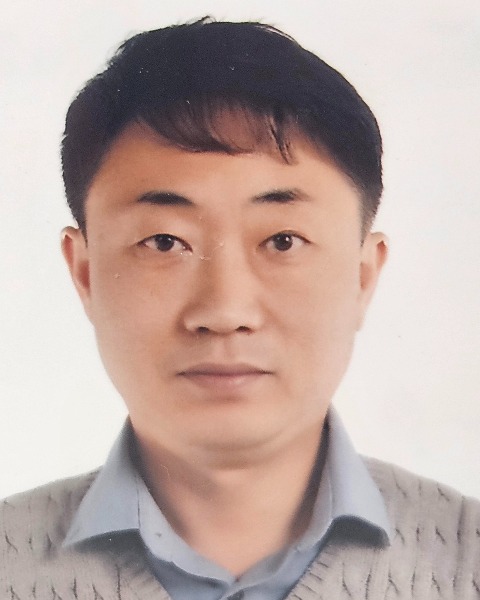Smart Manufacturing
Smart Manufacturing 5: Automation & Equipment Toward Fully Autonomous Factories
Integrated Production and AMHS Simulation for Layout Optimization in Semiconductor Fab Expansion
Thursday, October 9, 2025
11:15am - 11:35am MT
Location: Smart Manufacturing Pavilion Theater, North Building, Lower Level, Expo Floor

Nicholas Chang
Principal Consultant
VMS Solutions
FairFax, VA, United States
Speaker (SMfG)(s)
The continued surge in global semiconductor demand is driving manufacturers to expand their production capacity while maintaining uninterrupted operations in existing fabrication (fab) lines. However, planning for such expansion is far from straightforward. The challenge lies not only in scaling up manufacturing equipment but also in addressing the complex interactions between production processes and the underlying material handling systems. Capacity planning in semiconductor fabs must account for highly constrained cleanroom space, expensive and tightly integrated equipment, and the flow of materials through automated handling systems such as OHTs (Overhead Hoist Transports) and AGVs (Automated Guided Vehicles). These logistics elements often become critical bottlenecks during expansion if not adequately modeled and analyzed.
This study proposes an integrated simulation framework that combines both production and logistics models to support strategic decision-making for fab expansion. Traditional production simulations focus primarily on equipment throughput and processing times but often neglect the impact of material handling systems on overall performance. Likewise, standalone logistics simulations may fail to capture the dynamic nature of production variability. Our approach bridges this gap by modeling manufacturing tools and logistics resources in a unified simulation environment, allowing for a holistic evaluation of layout changes and capacity scenarios.
The proposed method enables engineers to evaluate various layout alternatives and expansion plans while taking into account equipment placement, material flow paths, transportation delays, and space limitations. By simulating both production and logistics sequentially, the framework can identify potential bottlenecks and assess the impact of logistical constraints on overall fab performance. This facilitates a more realistic and effective layout optimization process, supporting smarter and more resilient manufacturing strategies.
Case studies based on actual fab expansion scenarios demonstrate how this integrated simulation can uncover hidden constraints that would not be visible in isolated models. Results show that certain layout choices, although seemingly efficient from a production perspective, can severely degrade logistics performance due to congestion or excessive transport distance. By incorporating both perspectives, the proposed approach empowers fab planners to make balanced decisions that optimize throughput, reduce delays, and make better use of limited cleanroom space.
In conclusion, this work contributes a practical and scalable simulation method for optimizing semiconductor fab layout during capacity expansion. It aligns with the goals of smart manufacturing by integrating digital modeling, predictive analytics, and system-level thinking. The approach is adaptable to various fab configurations and can serve as a valuable tool for both greenfield planning and brownfield optimization.
This study proposes an integrated simulation framework that combines both production and logistics models to support strategic decision-making for fab expansion. Traditional production simulations focus primarily on equipment throughput and processing times but often neglect the impact of material handling systems on overall performance. Likewise, standalone logistics simulations may fail to capture the dynamic nature of production variability. Our approach bridges this gap by modeling manufacturing tools and logistics resources in a unified simulation environment, allowing for a holistic evaluation of layout changes and capacity scenarios.
The proposed method enables engineers to evaluate various layout alternatives and expansion plans while taking into account equipment placement, material flow paths, transportation delays, and space limitations. By simulating both production and logistics sequentially, the framework can identify potential bottlenecks and assess the impact of logistical constraints on overall fab performance. This facilitates a more realistic and effective layout optimization process, supporting smarter and more resilient manufacturing strategies.
Case studies based on actual fab expansion scenarios demonstrate how this integrated simulation can uncover hidden constraints that would not be visible in isolated models. Results show that certain layout choices, although seemingly efficient from a production perspective, can severely degrade logistics performance due to congestion or excessive transport distance. By incorporating both perspectives, the proposed approach empowers fab planners to make balanced decisions that optimize throughput, reduce delays, and make better use of limited cleanroom space.
In conclusion, this work contributes a practical and scalable simulation method for optimizing semiconductor fab layout during capacity expansion. It aligns with the goals of smart manufacturing by integrating digital modeling, predictive analytics, and system-level thinking. The approach is adaptable to various fab configurations and can serve as a valuable tool for both greenfield planning and brownfield optimization.
